Foraging Tips + Tools
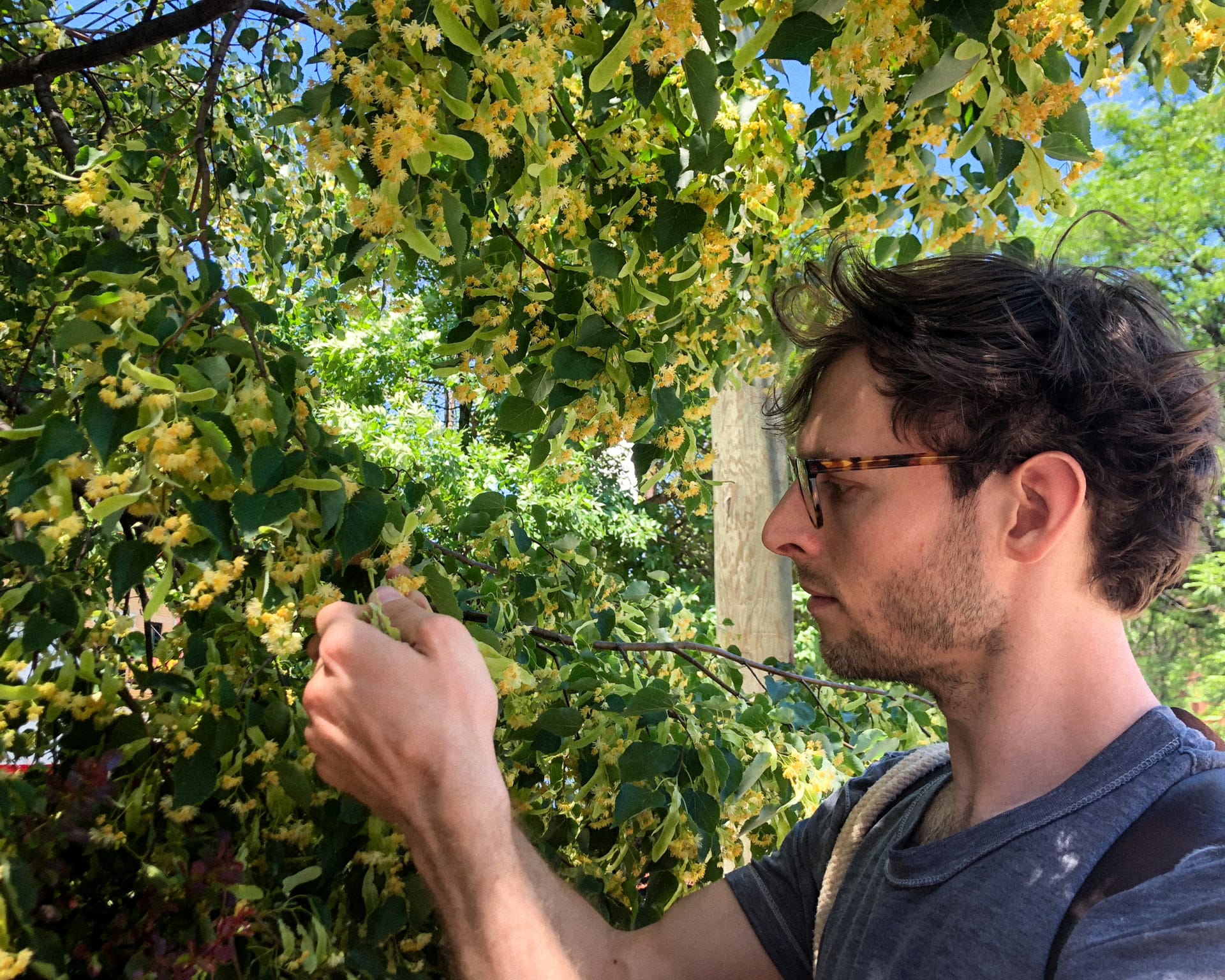
There are dozens of tips and rules floating around related to the best approaches for safe and ethical foraging (also known as "wildcrafting). The most important considerations have to do with safety and sustainability. It helps to take a 'do no harm' approach – some may argue that gathering any plant would be to engender harm upon the plant, but as many indigenous practices show us, working with and utilizing plants can actually foster health within plant communities. Of course, when you harvest a dandelion root, you will be killing the plant, so gathering with humility and respect is key here.
Michigan herbalist jim mcdonald speaks of the two 'first rules' of foraging/wildcrafting. I see these 'rules' as two sides of a single coin. They go together, and so one doesn't come before the other. Thinking about it this way reinforces foraging as a reciprocal act. If you are hastily harvesting plants for your own benefit without being certain of their ID, you are likely to cause harm to yourself and are also likely causing harm to the ecosystem you are harvesting from. If you know the plants you are harvesting, but are not paying attention to the well-being of the ecosystem you are harvesting from, you are indirectly causing harm to yourself by damaging the ecosystem that sustains both the plant population you are interested in and the human population that grows from that very same ecosystem.
Do No Harm – the two 'first rules' of foraging
First – on one side of the coin:
Do no harm to yourself: know the plant you are harvesting, and be absolutely positive that the plant you're gathering is in fact the plant you think it is. Even the most experienced foragers can make mistakes, and in some cases, a simple nibble of the wrong plant can mean death.
But my goal is not to scare you, my goal is to empower you to feel confident in gathering plants for your use in a way that supports your own health and the health of the plant communities and ecosystems you gather from.
Part of this confidence comes by knowing the plants that are poisonous first.
Also First – on the other side of the coin:
Do no harm to the plant population and ecosystem the plant grows in: since the plants, mushrooms, and the ecosystems in which they reside carry and nurture us, their health and well being directly influence our health and well being. So you need to gather in a way that's sustainable for the plant and the ecosystem the plant grows in.
When to harvest?
Below are general guidelines for when to harvest certain parts of plants–there are always exceptions. Know the plant you are harvesting, and you will have a good idea of when to harvest given the virtues you would like to preserve from the plant.
Roots
You can dig roots in the fall after the plant has gone to seed and/or died back for the winter and the energy of the plant has returned to the roots.
Alternatively, you can gather in the early spring before new growth begins, as the energy of the plant still resides in the roots and has stored potential ready to spring to life.
Sometimes I consider the direction of the medicine when considering when to gather roots.
I like to gather Mullein root in the spring of the second year of growth because I often use it for spinal alignment and lower back pain, and the energy of the roots in the spring of the second year is preparing to grow the upright and tall mullein flower stalk.
I like to harvest Valerian root in the fall because the energy of the plant is retreating back into the earth, which mirrors the medicinal action I want the valerian to facilitate in my medicine, supporting sleep and a retreat into the underworld of night.
Gather roots and rhizomes in the morning before the sun has reached its peak.
In many instances (like with marshmallow root) you can replant crowns to facilitate growth even after harvesting the root.
When gathering rhizomes (underground stems), you don't need to remove the plant entirely, you can trace your finger down the stem of the plant to locate the rhizome in the soil. You can then cut the rear end of the rhizome away from the stem and pull it up without removing the growing part of the plant from the ground. This allows the rhizome to be planted without much disturbance to the plant, and can often encourage more growth than if you hadn't dug a rhizome at all.
Leaves & Above Ground Portions
Most herbalists consider the leaves, stems and aerial parts of the plant to be best just before flowering. The energy of the plant is still focused on photosynthesis and not yet on reproduction, so there is more medicine available in the leaves and stem.
Gather these parts after the sun has evaporated the dew away. If the plant is aromatic and you want to capture the height of aromatics of the plant, harvest on a warm and sunny day when the plant is high in the sky but before the plant has spent too much time in the sun.
Flowers
Gather flowers at the peak of their blooming, like, when they make you melt from beholding their beauty, avoiding those that have begun to wilt. Like with leaves, gather after the sun has evaporated the dew off the plants, and if aromatic, before they have diffused their aromas off under the sun.
There are certain flowers that go to seed quickly as they dry (Goldenrod, New England Aster are examples) – if you gather these just as they are budding and before they are fully opened, you may be able to have dried herb that still looks like the flowers they are instead of a fluffy mess.
There are some exceptions. Lobelia, for example, likes to be harvested when most of the flowers have gone to seed but there are perhaps a few remaining flowers at the top of the flowering stalk.
Seeds
Collect seeds when ripe and not fully dried (unless you are collecting seed for planting).
Bark
Gather in early spring when the sap begins to flow upward from the roots, or in the fall, when the sap is returning to the roots. Often, the inner bark is what contains the medicine in bark as this is where the fluid transfer occurs within trees and shrubs (while the outer bark is more of a protective layer).
If gathering from a standing/live tree, never strip bark in a circle around the tree, as this will cut off the flow of nutrients from the roots to the branches and kill the tree. Cut in vertical strips, or better yet, prune branches and use the bark from pruned branches to minimize disturbance.
Think about stewardship here, maybe you are thinning a population to improve the growth of other trees in a forest (Wild Cherry as an example), you can gather the bark of the medicine while facilitating stewardship practices.
You can also gather bark from trees that fall in spring storms to reduce impact.
Foraging & Wildcrafting Tools
Hands
- These are your greatest tools and best for fully experiencing and connecting with the plant you are harvesting. You learn about their quirks, you learn about their prickles, the resin that accumulates beneath your fingertips tells you a story about how they heal themselves that stays with you all day long.
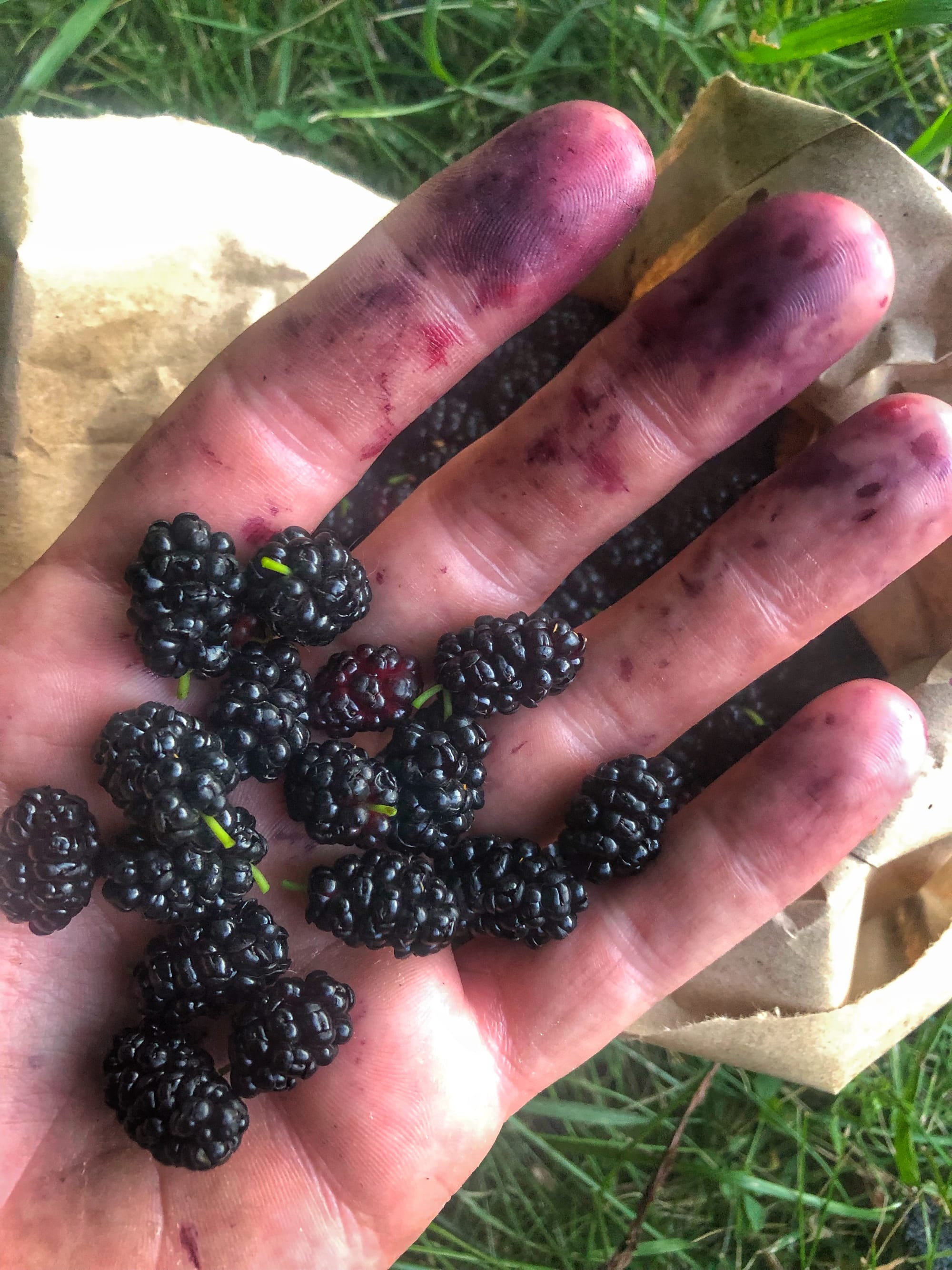
- In some instances the prickles are strong enough that you might consider wearing gloves, but if you can avoid them, I would!
Fixed Blade or Folding Knife
- For stripping bark, cutting stems, digging very small holes in the ground
- While it may be tempting to get a really nice knife like a Benchmade, keep in mind it's really easy to lose them out in the field. Having a good utility folding knife that's not too expensive is great, and you can get them sharpened frequently, and you won't be too upset if you leave them in the woods one day – obviously do your best not to.
- For the tougher, woodier parts of plants, you can use a knife to twist/pull a section off, with the awareness that knives can cause more damage to a plant if you are not using them correctly. For cleaner cuts, consider:
Pruners / Garden Shears
- To use on thicker branches or woodier parts of plants for a cleaner cut.
Loppers
- More for shrubs & branches with wider diameters.
- Can also be helpful for thicker roots and rhizomes in the ground, often after using a trench shovel or digging fork to expose the roots/rhizome.
Folding Saw
- Cutting things that may be too big for the loppers like larger woodier mushrooms.
Hori Hori
- A blade-like spade with a pointed end, sharp edge, and serrated edge. Ideally the blade extends from the tip to the base of the handle (not just attached at the handle, which will break really easily).
- But even if you do have one that extends from end to end, it could still break if you are trying it against a particularly tough root:
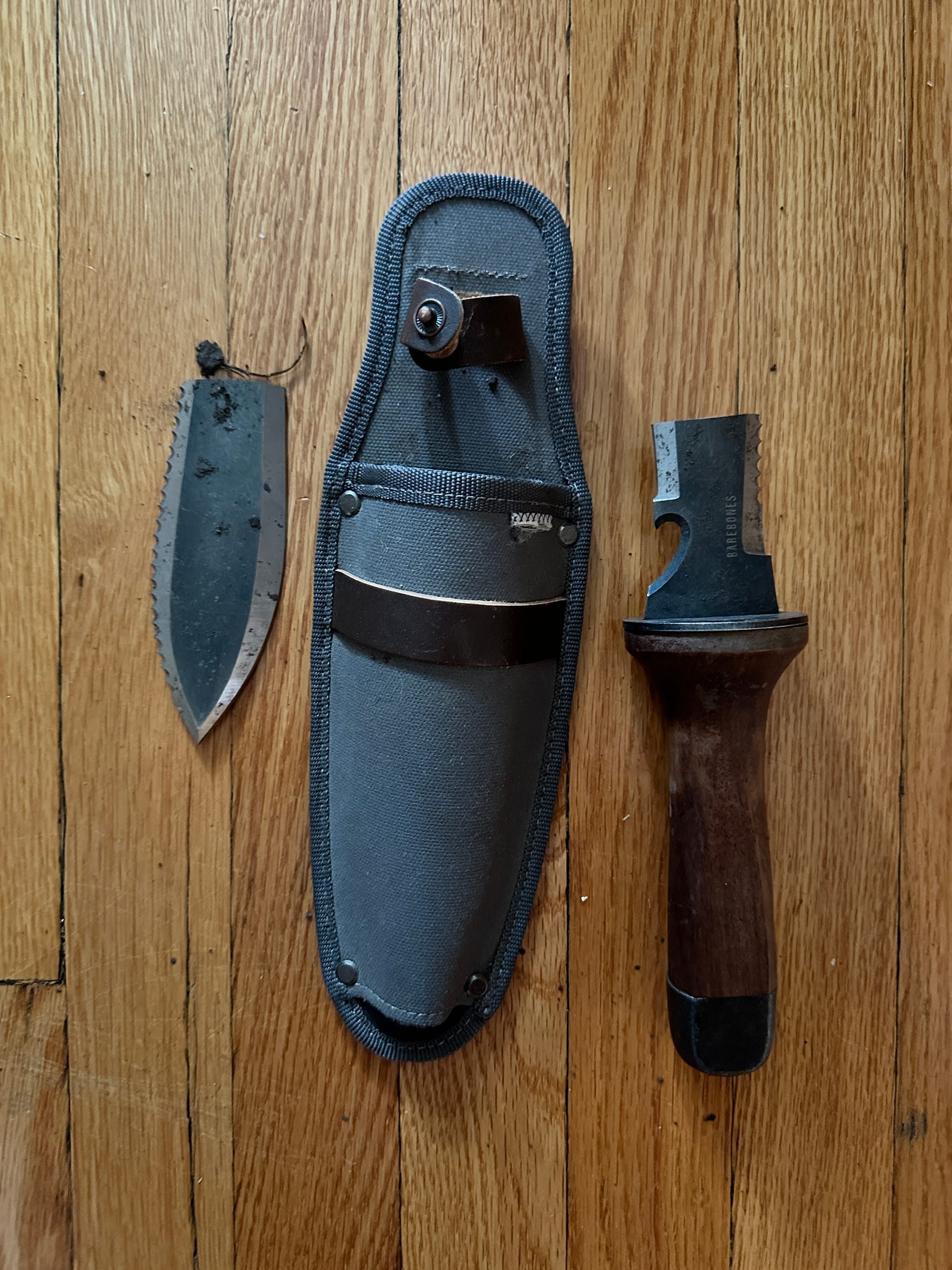
- Really great for digging smaller roots, rhizomes, and tubers.
- Allows you to cut through roots better than you could with a typical spade or trowel due to the serrated edge.
Trench Shovel
- When I'm digging plants that have long taproots like Burdock.
Digging Fork
- When I'm digging plants that have fibrous roots like Valerian
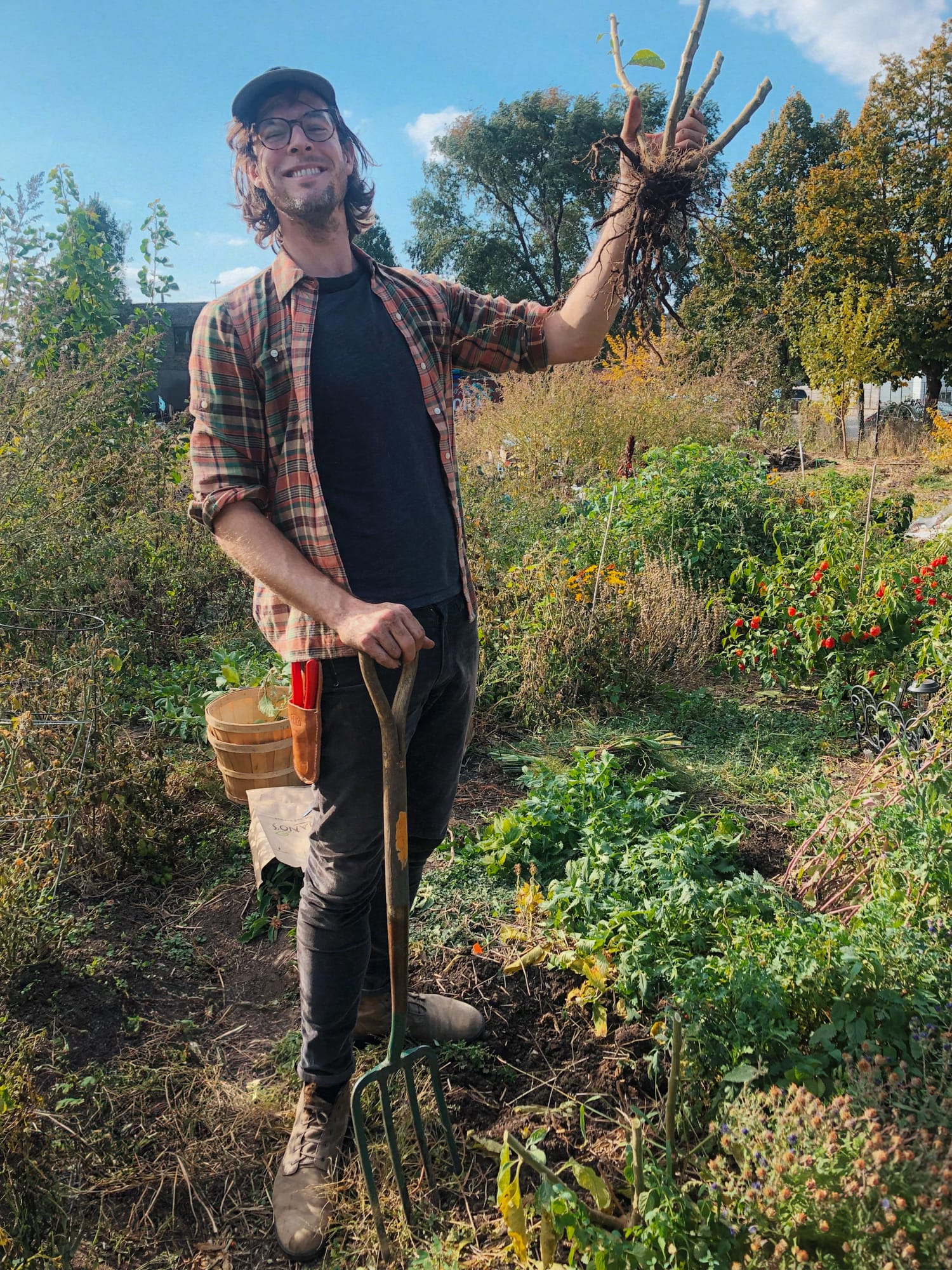
Of course, when you are digging beneath the surface, know ahead of time what your roots look like so you can use the right tool for the job. We want to disturb the soil as little as possible, because when we dig in, we are disrupting vast relationships and communities of microbes, fungi, and rootlets beneath the soil.


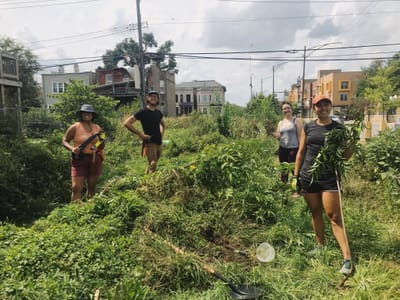
Member discussion